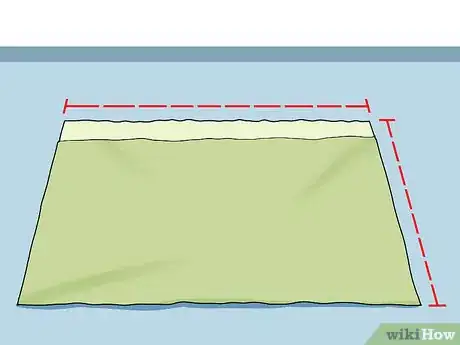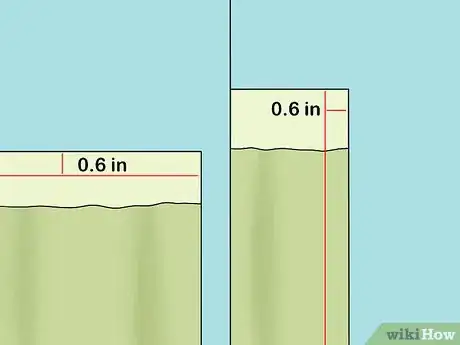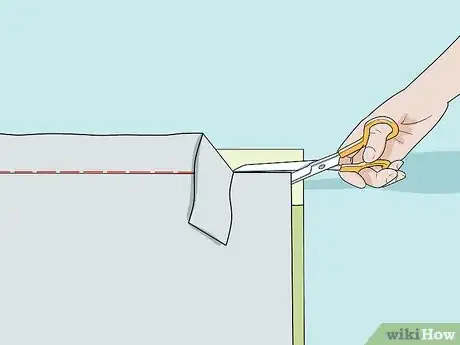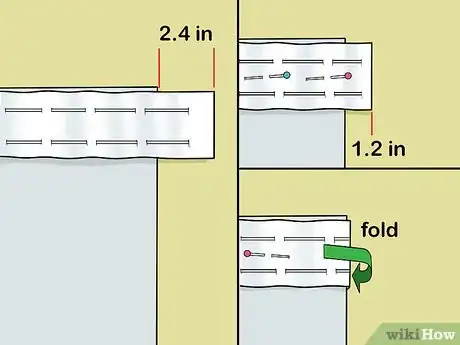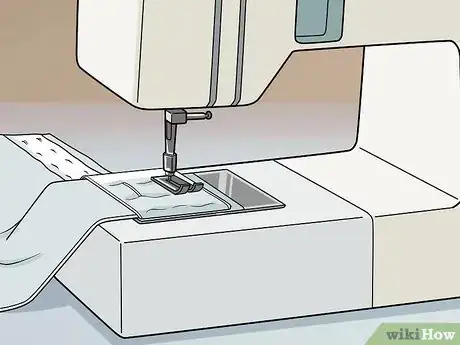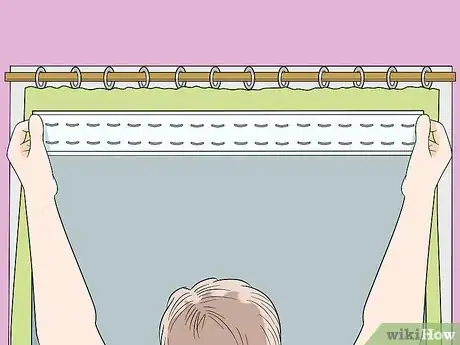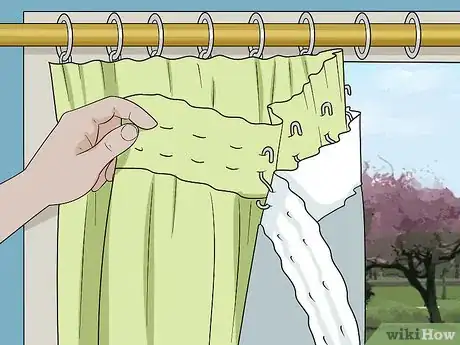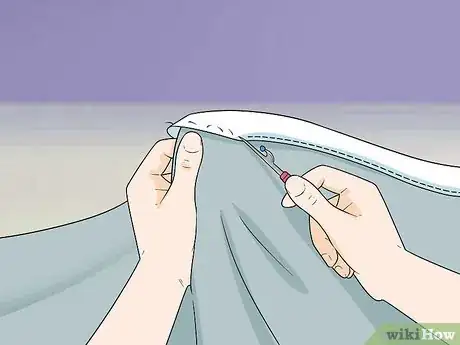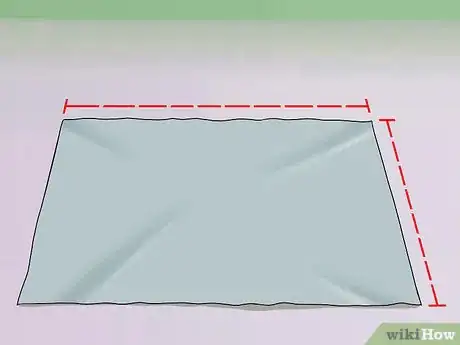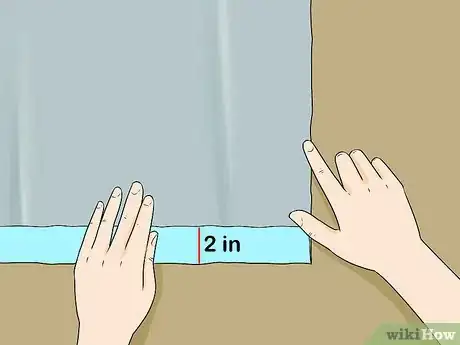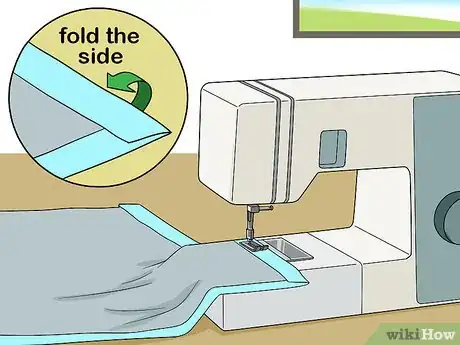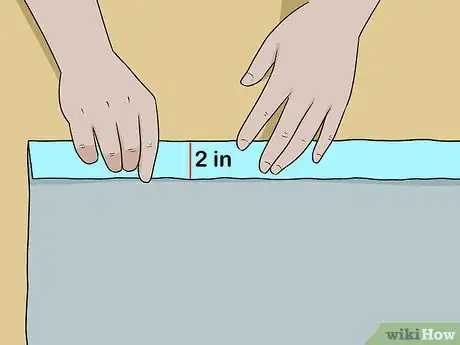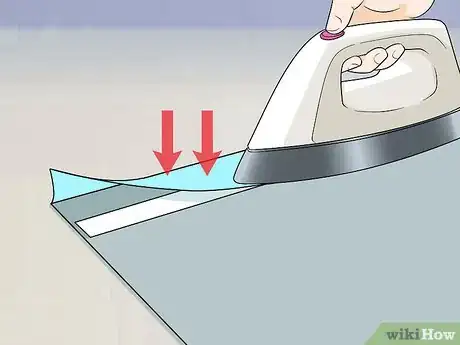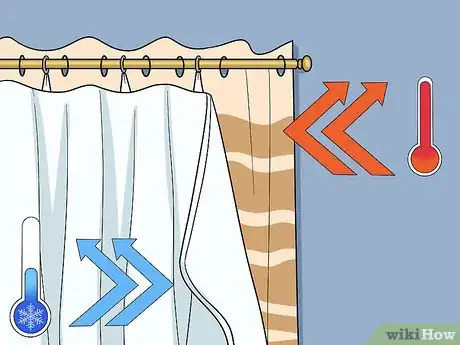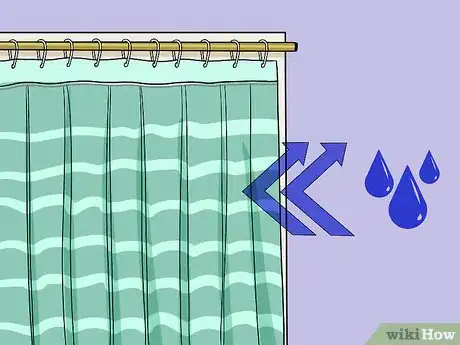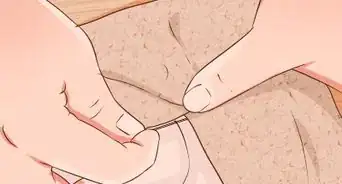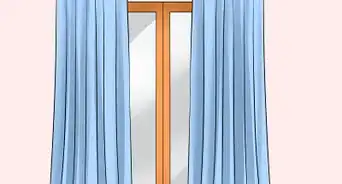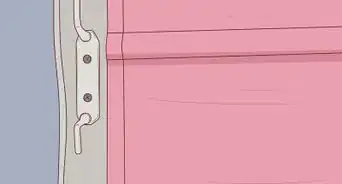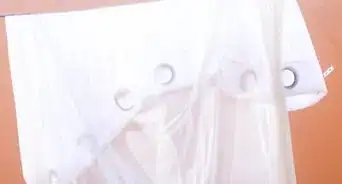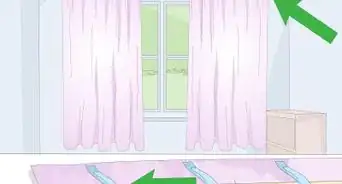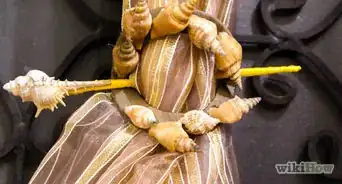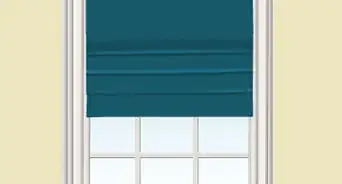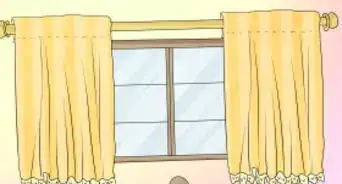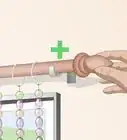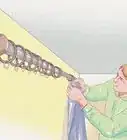This article was co-authored by Alessio Iadicicco and by wikiHow staff writer, Jessica Gibson. Alessio Iadicicco is an Apparel Manufacturing Specialist and the CEO and Co-Founder of MarkersValley, an online apparel and manufacturer sourcing platform that connects luxury fashion brands to a network of highly-vetted, truly Italian manufacturers. He holds a Bachelor's degree in Economy and Management of Financial Enterprises from The University of Naples Federico II. MarkersValley has connected fashion brands in over 100 countries and has a network of over 100 independent Italian factories and artisans. MarkersValley has been featured in Forbes, EQ, St. Louis Business Journal, Il Mattino, and Corriere Della Sera.
There are 8 references cited in this article, which can be found at the bottom of the page.
This article has been viewed 72,151 times.
If you're looking to save money on energy bills, make your curtains hang better, or protect your curtains from moisture, add a fabric lining. Choose a fabric based on how thick you want the lining to be and how much light you want to get through the curtains. If your curtains are hung using header tape, just sew the liner onto another piece of header tape and hook it into the curtain's header. If they're not, sew the liner directly onto the curtains and hang them back up.
Steps
Attaching the Liner to Header Tape
-
1Measure the length and width of the curtain. Lay your curtains flat on a clean surface. Use a measuring tape to measure from the bottom of the header tape near the top of your curtains down to the bottom edge of the curtains.[1] Then measure how wide the curtains are across the bottom.
-
2Determine the measurements for the liner. Subtract 0.6 in (1.5 cm) from the length measurement and subtract 1.6 in (4 cm) from the width measurement to get the size of your liner. If you're hemming the liner, don't subtract from the measurements. Instead, you'll need to add 0.8 in (2 cm) to the length measurement.Advertisement
-
3Cut the lining fabric. Lay your lining fabric on a clean flat surface and use fabric scissors to cut the fabric according to your measurements. If your curtains are wider than the lining fabric, you may need to sew together 2 lengths of lining fabric.
- To join the lining fabric, add 0.8 in (2 cm) to the width and sew them together lengthwise. You'll have a 0.4 (1 cm) wide seam in the middle).
-
4Attach the fabric to the header tape.[2] Measure the header tape so it's as wide as your lining and add 2.4 in (6 cm) so you can fold over the edges at the ends. Cut the tape and lay it on top of your coated lining fabric so the tape runs along the top edge. Pin the tape in place and fold 1.2 in (3 cm) of the tape under at both ends.
- If you're using non-coated lining fabric that could fray, fold over 1/2 inch (1.3 cm) along the top of the lining fabric before you pin the tape in place.
-
5Sew the lining fabric to the header tape. Use your sewing machine to stitch the lining fabric along the top of the header tape. Then move the fabric so you can sew the bottom edges of the lining fabric to the header tape.
- The lining should be securely attached to the header tape.
- If you’re working with a thick fabric like canvas, use a heavy needle with a ballpoint for an easier sew.[3]
-
6Attach the lining with the header tape to your curtain. Hold both ends of the header tape and pull apart so the header tape ruffles and becomes the same width as the curtain.
-
7Hook the liner onto the header tape of the curtain. Slide the curtain hooks into the header tape and feed these hooks through the header tape on the curtain. Try to leave about 6 to 7 in (15 to 20 cm) between each of the hooks. The liner should now be behind the hanging curtain.
Sewing the Liner to the Curtains
-
1Use a seam ripper to take out them hems on the curtains. You'll need to remove the hems from the sides and tops of the curtains, but not the bottoms.[4]
-
2Measure the length and width of the curtain. Place the curtains flat on a clean surface. Take a measuring tape and measure from the bottom to the top of your curtains. Then measure how wide the curtains are across the bottom.
-
3Cut the liner according to your measurements. Add 8 inches (20 cm) to the length measurement since you'll need to hem the lining fabric. Use fabric scissors to cut the fabric according to your measurements. If your curtains are wider than the lining fabric, you may need to sew together 2 lengths of lining fabric.[5]
- If you're not hemming the lining because it's coated fabric, don't add the extra length.
-
4Fold the bottom of the liner and hem it in place. Lay the fabric liner in place on top of your curtain. Fold the bottom end of the fabric liner under by 2 in (5 cm). Pin it into place so you can easily sew the hem across the bottom of the curtain.[6]
-
5Hem the sides of the curtain. Fold the sides of the curtain in towards the liner. You should be able to see where the old stitches were that you ripped out. Use your sewing machine to stitch along both sides to secure the liner into the curtain.[7]
-
6Fold the top of the curtain over and hem it in place. Fold the top 2 in (5 cm) of the curtain over towards the liner at the top. Sew across the top of the curtain where the old seams had been. The liner should now be securely attached to the curtain.[8]
-
7Consider using iron-on tape for a temporary fix. If you don't have a sewing machine and you need a temporary liner for your curtains, lay iron-on tape along the edges of the liner. Fold the curtain sides over the liner and iron them in place according to the tape manufacturer's instructions.
- Iron-on tape can make your curtains appear stiff, so try sewing the liner if you prefer a more natural drape.
- Most iron-on tapes won't be sturdy enough to support the weight of the curtains and liners, so only use this for very light fabrics.
Choosing a Liner
-
1Select a thermal liner if you'd like to insulate your windows. If your windows are drafty or thin, save on your heating and cooling costs by lining the curtains with a thermal fabric. The insulation will keep heat in your room during the winter while keeping out drafts from the window. It will also keep cool air from escaping during the summer months.
- Most thermal liners are made from cotton, polyester, or a blend.
-
2Buy blackout liners if you want to darken the room. Blackout lining is made from a thick, stiff fabric that will completely block light from passing through to your curtains. It's a good choice if you want privacy or want to block light in a room that gets lots of direct sunlight.
- Blackout curtains will also protect furniture and rugs from fading.
-
3Select water repellent or resistant lining. Consider the window that the curtains will hang in front of. If the window frequently has condensation, you should line the curtains with a water repellent or resistant lining. The liner will block the moisture before it has a chance to soak into your curtains and damage the fabric.[9]
- Try using water repellent or resistant lining on kitchen or bathroom curtains since these are high humidity rooms.
-
4Pick a plain cotton lining to add weight to thin curtains. If you aren't concerned about blocking light or insulating a room, use a standard cotton liner.[10] The weight of the liner can help weigh down light curtains so they hang better. The liner will also protect sheer curtains from sun damage.[11]
- Check the materials of the plain lining since some may be made with polyester and cotton.[12] The polyester will prevent the cotton from shrinking, if you'd need to wash the lining.
Expert Q&A
-
QuestionWhat should I line my curtains with?
 Donna SerinoDonna Serino is a Dry Cleaning and Alterations Specialist and the Marketing Director for Hallak Cleaners, based in Manhattan, New York and Hackensack, New Jersey. She has expertise in tailoring and alterations, couture and casual wear, designer handbag cleaning, and suede, leather, and furs care. Donna and Hallak Cleaners are part of the National Cleaner’s Association, Drycleaning and Laundry Institute, and Leading Cleaners Internationale.
Donna SerinoDonna Serino is a Dry Cleaning and Alterations Specialist and the Marketing Director for Hallak Cleaners, based in Manhattan, New York and Hackensack, New Jersey. She has expertise in tailoring and alterations, couture and casual wear, designer handbag cleaning, and suede, leather, and furs care. Donna and Hallak Cleaners are part of the National Cleaner’s Association, Drycleaning and Laundry Institute, and Leading Cleaners Internationale.
Dry Cleaning & Alterations Specialist Cotton is best, but polyester or a polycotton blend will also work well for liner fabric.
Cotton is best, but polyester or a polycotton blend will also work well for liner fabric.
Things You'll Need
Attaching the Liner to Header Tape
- Fabric scissors
- Liner fabric
- Measuring tape
- Pins
- Header tape
- Header tape hooks
- Sewing machine
Sewing the Liner to the Curtains
- Fabric scissors
- Liner fabric
- Measuring tape
- Pins
- Sewing machine
- Iron-on tape, optional
- Iron, optional
References
- ↑ Donna Serino. Dry Cleaning & Alterations Specialist. Expert Interview. 31 August 2021.
- ↑ Donna Serino. Dry Cleaning & Alterations Specialist. Expert Interview. 31 August 2021.
- ↑ Alessio Iadicicco. Apparel Manufacturing Specialist. Expert Interview. 16 June 2021.
- ↑ https://youtu.be/U7HUJdxTDtA?t=134
- ↑ https://youtu.be/U7HUJdxTDtA?t=145
- ↑ https://youtu.be/U7HUJdxTDtA?t=162
- ↑ https://youtu.be/U7HUJdxTDtA?t=160
- ↑ https://youtu.be/U7HUJdxTDtA?t=167
- ↑ https://www.onlinefabricstore.net/makersmill/how-to-pick-drapery-lining/
- ↑ Donna Serino. Dry Cleaning & Alterations Specialist. Expert Interview. 31 August 2021.
- ↑ https://www.onlinefabricstore.net/makersmill/how-to-pick-drapery-lining/
- ↑ Donna Serino. Dry Cleaning & Alterations Specialist. Expert Interview. 31 August 2021.
